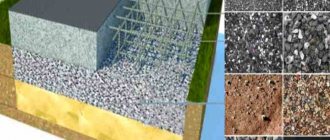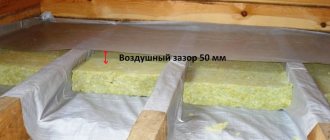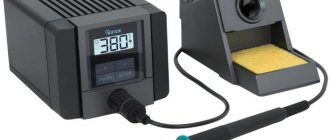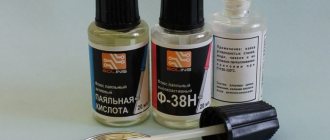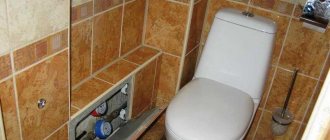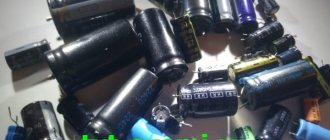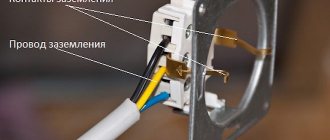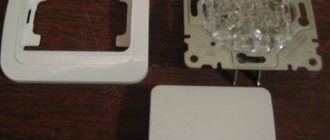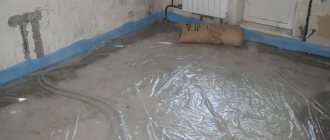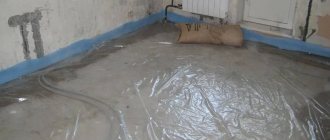Purpose
To prepare parts for applying solder, it is necessary to clean them of particles of foreign materials - dust, sand, water. In addition, it is necessary to remove the oxide film from the surface, which is present on almost all metals.
And if the first condition is easy to cope with mechanically, using a file, needle file, or sandpaper, then the second condition is difficult to fulfill without the use of chemical compounds - an oxide film very quickly appears on the surface of the metal.
Substances that remove film and prevent the formation of a new one are called fluxes, and the most effective of them is soldering acid. It is an active flux, that is, during soldering it chemically affects the composition of the metal surface.
Professionals never question why soldering acid is needed; they know very well that very often it is impossible to complete the assigned tasks without it.
Soldering acid is used for the following metals:
- copper and its alloys;
- nickel;
- iron;
- structural steel;
- alloys of non-ferrous metals.
If copper or brass parts are successfully soldered with borax, then it is often possible to solder aluminum or steel workpieces to each other only using soldering acid. Upon completion of work, the active flux must be washed off with water containing a small amount of alkali.
You can buy acid in stores, or make it yourself using chemical reagents. Although purchasing raw materials can be more expensive than ready-to-use flux.
What is soldering acid used for?
Author:
Igor
Date of:
20.11.2016
- Article
- Photo
- Video
Anyone who has tried to solder anything understands perfectly how important it is to use flux. Without it, it is almost impossible to achieve any normal result, not to mention the fact that most solders will not even begin to melt without the use of additional consumables. Thus, when trying to answer the question of what soldering acid is needed for, it is worth understanding that it is the same flux as other materials. The main feature of this composition is its high activity. If using ordinary rosin it is not possible to achieve the desired result, then acid often helps solve the problem.
Soldering acid for soldering
Many have heard about its existence, but from their own experience they never learned why soldering acid is needed. Despite its prevalence, it is most often used in the professional sphere, since this is where complex cases occur that require careful preparation. This material is supplied in liquid form and is well suited for soldering small items. Soldering acid is produced in accordance with the following GOST - 23178-78.
Why is soldering acid needed?
Regardless of its variety, the main purpose of this material is to create the most acceptable conditions for soldering. To achieve an ideal result, the surface of the material must be clean, but cleanliness visible to the human eye is not yet an indicator. Here it is required that there are not even thin films of fat on the surface, and most importantly, oxides, which can create an indestructible film that will interfere with the normal adhesion of materials. The melting point of some oxides is significantly higher than the melting point of the base metal and soldering in general, so the quality of the connection will be minimal. A prime example of this is aluminum soldering.
Thus, the main factor for which soldering acid is needed is the elimination of all excess deposits. Application helps stop the occurrence of oxide, as some metals can form a film again within a few seconds after mechanical cleaning. Chemical processing also takes place here, which is a more reliable and popular method.
Another effect that soldering acid has during application is to reduce the tension of the molten solder. This ensures its freer distribution. When assembling boards, you should not use such material, as there is a risk of damage to small parts. This condition is especially typical when working with concentrated acid. It belongs to aggressive environments, therefore, when faced with a choice of what kind of solder to solder microcircuits with, ordinary spruce rosin is often used.
It is also worth noting that the acid becomes a conductor if an electric current is applied. This is another reason why you should not use it when working with microcircuits, as it can cause a short circuit, which will lead to serious damage to the entire product. This is especially noticeable if the drying after soldering is not good enough.
Advantages
- Allows you to destroy almost any oxides that form on the metal;
- Retains its effect for a long time, which does not allow plaque and oxides to form again;
- Can be used both in concentrated form and in dissolved form to reduce the aggressiveness of the environment;
- Very common in theme stores and affordable flux;
- Improves the wettability and spreadability of solder on the base metal.
Flaws
- The environment is very aggressive, which is not suitable for all soldering options;
- Contact with acid can be dangerous to human health, so you need to make sure that it does not get on the mucous membrane;
- It is advisable to work with its use in ventilated areas.
Types of soldering acid
Having figured out why soldering acid is needed when soldering, it’s worth taking a closer look at what its types are.
- Orthophosphorus - when the surface of a metal is treated with such a flux, a protective film is formed on it. It provides protection against the formation of oxides and other contaminants.
What does it consist of?
In general, soldering acid is called zinc chloride, but the composition of the substances used in practice is somewhat different. Most often, soldering is done using preparations based on hydrochloric or phosphoric acid with the addition of solvents.
Concentrated hydrochloric acid is not applicable because it corrodes the metal. For electronic circuits, acidic substances are not used, soldering using rosin or choosing another inactive flux.
One of the universal types of liquid flux can be considered soldering acid FCA, produced by chemical industry enterprises.
This drug contains:
- zinc chlorides;
- ammonia (ammonium chloride);
- hydrochloric acid;
- water purified from impurities.
At home, soldering acid is made by dissolving zinc in hydrochloric acid. To obtain satisfactory results, you need to know how to solder metals and alloys with soldering acid, and also strictly follow safety rules when working.
Precautionary measures
Acidic compounds are quite dangerous - they easily corrode the skin and even muscles. At the same time, in the process of working with them, a lot of toxic fumes are formed.
For example, hydrochloric acid reacts to ordinary air, as evidenced by smoke coming out of an open container. Inhaling it can cause irreparable damage to the lungs.
For this reason, carry out all work in:
- safety glasses;
- gloves;
- respirator with a carbon filter.
If possible, also get out into the fresh air.
If an aggressive liquid comes into contact with the skin during soldering, immediately wash it with soap or a 6% soda solution.
Those who try to solder radio equipment with acid are extremely short-sighted. In this situation, the flux is almost impossible to wash off from the surface of the board, which leads to rapid decomposition of copper.
Acidic compounds should be stored in tightly closed containers from:
- ceramics;
- porcelain;
- glass;
- fluoroplastic.
General rules of application
For soldering, tin-lead solder (PLS) is usually used. Its main component is always tin, and lead is added in proportions, depending on which the solder acquires the properties necessary for soldering.
Lead makes the material softer and more fluid, while tin provides strength to the hardened joint.
Despite the presence of lead, the fluidity is often not enough to overcome the surface tension forces in a drop of solder, and with little adhesion to the metal surface, the solder remains in the form of a drop that does not want to stick to the parts.
If the surfaces are first cleaned of oxides, the adhesion force will exceed the forces of surface tension and the solder will spread over the surface, ensuring good adhesion, that is, sticking.
To clean the surface, it is mechanically cleaned using a file or sandpaper and soldering acid is applied. It can be applied with a small brush made of natural materials or with a small spatula.
Often the composition is contained in plastic bottles with dispensers that are convenient to use. The flux must cover the entire surface to be soldered, otherwise the solder will not stick well to it.
During contact of the heated solder with the surface, the soldering acid evaporates, but its presence is no longer required. After the solder is applied, it itself performs a protective function, preventing oxidation. This process is called tinning.
Both soldered workpieces are subject to tinning. After tinning, you can easily connect them by applying additional solder to the joint.
Of course, when soldering with a soldering iron, the tool must also be clean and the tip, made of copper, must not contain oxide films. To do this, the tip must also be tinned first by dipping it while heated in soldering acid and applying solder to it.
What is soldering acid used for?
Every professional, and even a soldering enthusiast, knows what flux is used for. Thanks to it, materials melt better, which allows you to achieve the desired result. It is not always fashionable to achieve this with the help of rosin, so another consumable is used - soldering acid. It helps solve many problems due to the high activity of the composition.
Many people have heard of soldering acid, but are not familiar with its characteristics and features. It is available in liquid form and is used for soldering small parts, especially when difficult situations arise. The acid is produced in accordance with regulatory documentation.
What is soldering acid used for?
There are many types; soldering acid is used to create acceptable conditions for soldering. To obtain the desired result, the surface should be cleaned of rust, fatty films and oxides that fall under the eye of the master, which, forming an indestructible film, interferes with the adhesion of metal parts. The soldering and melting temperature of the base metal is too low to remove this film, so the connection will be weak. This process is clearly observed when soldering aluminum.
Based on this, it is concluded that soldering acid serves to destroy surface plaque. It not only removes it, but also prevents the appearance of a film after mechanical processing. The acid also serves to reduce the voltage of the solder, it becomes more fluid and covers the entire working surface. This soldering method is popular and reliable. This method should not be used when working with small parts, since the solder covers other elements and damages them. This is especially true when working with concentrated acid. Therefore, rosin is used in the manufacture of circuit boards and microcircuits.
Another feature of soldering acid is its good conductivity of electric current. When working with microcircuits, it can cause a short circuit, which will lead to breakdown of the entire product.
Advantages of acid
Among the advantages are the following:
- cleans the working surface from oxide film;
- protects the metal from the reappearance of plaque and oxides;
- can be used in concentrated and dissolved form, depending on what result needs to be achieved;
- high availability;
- improves the fluidity of solder on the base metal.
Negative properties
In addition to its advantages, soldering acid has a number of disadvantages:
- aggressive environment is not suitable for all soldering methods;
- the substances are hazardous to human health, so precautions should be taken;
- It is necessary to work in ventilated areas.
Type of acid
Having determined what this substance is needed for, let’s consider the main types of flux.
1. Orthophosphoric acid – a special film is formed on the working surface, which prevents the formation of oxides and protects against other contaminants.
2. Hydrochloric acid – has a complex chemical composition. Sold in small flasks. It can be recognized by its yellowish tint and pungent odor. It is more aggressive than the previous type, so precautions should be taken when working with it. When it comes into contact with the skin, hydrochloric acid corrodes it. In addition, soldering is carried out in a well-ventilated area.
How is soldering done?
Let's take a closer look at the soldering process using soldering acid. Before starting, the metal surface is cleaned of rust and other dirt using sandpaper. Next, a few drops of acid are applied to the work surface and solder.
Note! The acid must be applied using rubber gloves to avoid damaging the skin.
If the working surface is completely covered and there are no gaps or omissions, then this amount of flux is selected correctly. It will ensure the strength of the structure. The heated end of the soldering iron melts the solder, which is transferred to the acid base. These manipulations are also carried out from parts that should be attached to the main surface. After the preparatory work has been completed, the direct connection begins. Molten solder is applied to the contact point between the parts, after which all structures are allowed to cool.
Soldering without a soldering iron
Sometimes when soldering using soldering acid, you can do without a soldering iron. One of these methods is used, for example, when soldering twisted wires during electrical installation work on electrical wiring.
In this case, flux is applied to the twist with a brush, and for a better effect, the twist is dipped in a small container with acid. After this, the twist is immersed in a container with molten solder and held for about 1 minute so that the wires warm up well and the solder penetrates to all points of their surface. This soldering provides excellent electrical conductivity when connecting wires.
After soldering, it is necessary to remove the remaining soldering acid from the joint in order to avoid metal corrosion and destruction of the joint in the future.
It must be remembered that when installing printed circuit boards of electronic circuits, when soldering electronic components of radio devices, it is not recommended to use soldering acid, since very thin conductive traces of the boards can be damaged. When applying flux, soldering acid can dissolve them.
Soldering technology
The basis of any soldering is high-quality heating of the parts being soldered and then securing them with solder. two types of soldering can be distinguished : using flux or using rosin.
Soldering with rosin
Learning to solder with a soldering iron with rosin is more difficult, but once you master this skill, it will be possible to complete 90 percent of the work.
Let's look at the example of soldering wires to a board. First you need to warm up the wire; to do this, apply the tip of a heated soldering iron flat (it’s better if it’s a tip in the shape of a screwdriver), pressing as much as possible. After a few seconds, the wire with the tip pressed to it is lowered into rosin, which, when boiling, is evenly distributed over all the wire cores. This way the wire is prepared for applying solder. Using a soldering iron tip, take a small part of the solder and apply a thin layer of it to the wire. In this case, you should not get any drops or unaffected areas; ideally, you get the same wire, but in tin.
We clean the soldering iron tip with a metal sponge or cloth and, touching the rosin with the tip, run the tip over the board, leaving a thin layer of rosin on the surface. The surfaces are prepared. Ensuring maximum contact between the wire and the board, we press the tip with a thin layer of solder onto the wire and “stroke” the soldering area several times with a soldering iron for better heating. After this, let it cool and check the contact for strength.
Safety regulations
In the production of soldering acid, hydrochloric and phosphoric acids are used. They are very active (although phosphorus is weaker) and easily react with many chemicals. When such substances come into contact with the skin, they cause a chemical burn.
Read also: Towbar for walk-behind tractors
Even when diluted, their vapors can damage the mucous membrane of the sensory organs.
Taking into account the above facts, safety rules when handling soldering acid include secure storage of the drug, the use of protective clothing and gloves, and good ventilation of the work area.
[Acid for soldering is necessary] if the use of rosin does not allow the necessary elements to be properly soldered together.
The use of soldering acid for soldering helps remove the oxide film layer from the surfaces being soldered and makes it possible to properly prepare them for joining.
As a rule, rosin is used to prepare copper parts for soldering with your own hands. But soldering acid is used for tinning not only copper, but also its alloys - bronze and brass.
And also for stainless steel, precious and ferrous metals, aluminum and nickel, even for soldering cast iron.
The nuances of using soldering acid
When carrying out soldering work using this acid, it is extremely important to follow certain rules, especially those related to safety issues. All actions must be extremely careful and precise so that no drops or particles get on the skin. Work should be carried out in certain equipment, consisting of at least protective clothing with long sleeves and gloves.
Another point is protection from harmful acid fumes. It is advisable to carry out the work in a room where proper ventilation can be ensured (using natural or forced ventilation). The respiratory organs must be protected by using a respirator or other similar means, since acid vapors not only negatively affect health, but also simply have an extremely pungent odor, which simply will not allow you to work calmly and with concentration.
Advice! Do not try to use this acid for soldering microcircuits, as it is extremely corrosive.
The ban on the use of soldering acid in this area is due to the following factors:
- small and thin parts used in microcircuits can simply be corroded by acid;
- This flux belongs to the category of conductive, so the slightest traces of it can lead to a short-circuit on the board.
After completing work with soldering acid, it is necessary to ensure high-quality cleaning of the soldered surface from it. This requirement is explained by the fact that after using this acid, its salts remain on the surface, the presence of which is categorically unacceptable on the surface of used products.
Soldering acid can be sold in several different types, the difference between which lies mainly in concentration. In most cases it is supplied in a diluted state, while concentrated is offered only for the most difficult cases. The standard option is a 10% solution - it can be used even when specific data regarding the recommended concentration of a given flux are not available.
The need to use acid fluxes
Any soldering acid - hydrochloric or phosphoric acid - is designed to create an ideal environment for the interaction of solder with elements.
Their use makes it possible to remove contaminants and oxides from the working area, prevent the resumption of the oxidation process and reduce the tension of the solder, in order for it to spread more freely.
As a result, reliable soldering of parts is ensured.
Depending on the type of metal, the flux for soldering is selected. It is worth noting here that soldering acid is not used when assembling boards.
Acid belongs to the category of aggressive media and contributes to the destruction of components standing in its path.
In addition, it is an ideal electrical conductor and has the property of creating additional conductive channels.
Therefore, you should not even count on neutralizing the acidic environment after soldering.
Application of acids
To solder metal products (pipes, radiators, buckets, pans), the surface of the elements is thoroughly cleaned, using a file or sandpaper. An acid solution is applied to the cleaned areas with a brush, after which solder is melted to a liquid state on the surface with a soldering iron.
How to solder correctly with a soldering iron
Liquid solder tins the cleaned areas; when boiling, the acid flux comes to the surface. When the solder hardens, the soldered elements are securely and hermetically fixed.
You can solder with a powerful soldering iron or an open flame from a gas burner. Various heat sources can be used depending on the surface area to be heated and the melting point of the solder.
Remains of acid flux are washed off with water, preferably a soapy, alkaline solution, this will prevent further corrosion of the metal.
Machined and brazed stainless steel elements
Acid can damage skin and muscle tissue, and inhaling vapors can damage the respiratory organs. When contacting air, hydrochloric acid enters into a chemical reaction, and smoke is visible above the open container. To work correctly in these conditions, wear safety glasses, rubber gloves, a gas mask, or a respirator.
If the solution gets on the skin, wash this area of the body with a 6% alkaline solution or plain soap. It is not recommended to solder radio circuit boards with fluxes containing acid. The acidic components are difficult to wash off and contribute to the breakdown of copper tracks. It is better to replace them; there is a special paste for this.
Soldering acid solutions should be stored correctly in containers made of the following materials:
- glass;
- ceramics;
- porcelain;
- fluoroplastic
Such dishes do not react with acid; the prepared composition can be stored in it for a long time.
DIY hydrochloric acid flux
Often, to process the parts being soldered, a flux is purchased, which is commercially available and is simply called soldering acid.
The manufacturer supplements the product with instructions on the conditions of its use, which makes it easy to navigate its purpose.
Usually this is tinning and soldering of stainless steel, silver, copper, aluminum and various alloys.
In the production of flux, hydrochloric acid is used, in which zinc is dissolved, resulting in a base - a zinc chloride compound. It is quite easy to make such a composition at home with your own hands.
To prepare the composition you need to take:
- 1 liter of HCL (concentrated hydrochloric acid);
- 412 g Zn (zinc).
Next you will need a container made of glass, ceramic or porcelain. First, zinc is placed in the dishes, then hydrochloric acid is poured.
It is very important to prepare the composition with care; fill ¾ of the container with acid.
Zinc and hydrochloric acid can be bought in special chemical stores, but if you have old AA batteries at home, Zn can be easily obtained from them.
After the reaction of dissolving zinc in hydrochloric acid occurs, the evolution of hydrogen will stop.
That is, bubbles will no longer form in the liquid, it will become transparent. The prepared soldering acid composition is carefully poured into a tightly sealed glass container.
Precautionary measures: when making flux, it is recommended to be near running water; if the composition suddenly gets on the skin or, even worse, in the eyes, it is necessary to rinse them with plenty of water.
By the way, hydrochloric acid in its pure form can be used as a flux, provided that iron parts are processed.
The concept of soldering acid
Otherwise, this is called zinc chloride aqueous solution. This mixture contains zinc and chlorine. The chemical formula of this solution is ZnCl2 .
The mixture is sold in ready-made packaging in stores such as “radio technicians” or others related to small parts and mechanisms, but soldering acid with your own hands can be no worse than purchased one. It will be much more difficult to prepare it than to buy it, because it is sold as freely as aspirin in a pharmacy, but the manufacturing process can be interesting. The most necessary “ingredient” is an acidic brine solution. However, instead of fiddling with preparing it, it is better to use ready-made products.
We must remember how to use soldering acid. It must be used correctly and carefully, without contact with skin or other objects. Its use should occur only within the workplace, without spreading it over a large area.
Storing it in its pure form is very dangerous, and the composition of soldering acid itself is extremely harmful.
Phosphoric acid for flux production
The second common type of soldering acid is phosphoric acid - H3PO4. It also ideally removes oxide film from metal surfaces and prevents its renewal.
Reference: H3PO4 (orthophosphoric acid) is a component of many anti-corrosion compounds for metal processing.
To carry out high-quality soldering of elements made of nickel or chromium, such acid is used undiluted. Moreover, the composition prepared using it includes 1/3 of ethanol or ethyl alcohol.
The share of orthophosphoric acid is 32%, and 6% is rosin.
In other acid compositions used for tinning and soldering, the proportion of acid can reach 100%.
Very often, H3PO4 is combined with zinc chloride, and its mass in the finished flux can reach 50%.
The use of phosphoric acid is not limited to soldering nickel alloys; it is used to connect elements made of stainless steel, copper, aluminum and low-alloy steel.
Orthophosphoric acid is a component of the classic active flux "F-38 N", the use of which makes it possible to solder copper alloys and pure copper, various steels and chromium-nickel alloys.
“F-38 N” is an excellent option for carrying out the work process in hard-to-reach places; it has the ability to protect welded elements from corrosion.
The components of “F-38 N” are: diethylamine hydrochloride and 25% phosphoric acid.
Orthophosphorus soldering composition is characterized as fire and explosion-proof. It is recommended to store and use the product with all precautions.
In case of contact with skin, rinse for at least 10 minutes under running water.
Types of acids for soldering
Now let’s try to figure out how to properly solder a radiator and other complex structural products with a soldering iron and acid. Let's look at an example of which acid solutions are suitable for a certain group of products and metals.
- Galvanized iron. Please note that in this case it is best for you to use zinc chlorate, which you can buy ready-made in specialized stores, or prepare yourself. We take a small amount of hydrochloric acid, about 100 ml, and throw a piece of zinc into it. A small fragment of zinc can be removed by hand from AA batteries. When a chemical reaction occurs, the zinc will completely dissolve, releasing hydrogen. Next, you will need to wait time for the solution to cool. A transparent yellow base forms at the top, which must be carefully poured into a glass container. The sludge must be disposed of; it is not recommended to dispose of the sludge into the sewer system, otherwise it may damage the metal pipes. Then you can use the finished mass to complete the work. Be sure to ventilate the room.
- Stainless steel. Have you ever wondered how to properly solder the wires of New Year's garlands with a soldering iron and acid? We will help you learn some of the nuances when working with stainless steel defects. The material used is orthophosphoric acid. The component contains 50% zinc chloride material; 0.5% - ammonia composition; water with a pH concentration of 2.9%. In the industrial version, the mixture has a light yellow or transparent tint. When the temperature reaches 213C, the substance is converted to H4P2O7, which is called pyrophosphoric acid. This composition degreases the working surface of the metal at high temperatures.
Acidic solutions for soldering
In some cases, molten pyrophosphoric acid will help solve the problem of how to properly solder copper wires with a soldering iron with acid, while the use of phosphoric acid is allowed for the following metals:
- Stainless steel.
- Brass.
- Metal with nickel base.
- Copper group of metals.
- Metals containing carbon steel and low alloy group.
Use of tin for soldering
Different materials can be used for soldering metals, but connecting elements with tin is much easier and more convenient.
Tin can be used to connect parts made of stainless steel, aluminum, copper, and its alloys.
Tin is melted at a temperature of 2500; for this purpose, various heating devices can be used:
A soldering iron is a device with a metal working part and a plastic handle, and can have a variety of tips.
Heats up with a gas burner.
Electric soldering iron - the set includes replaceable tips of various sizes and shapes. The structure is assembled from a soldering rod and a heating coil, which can have different heating power.
Gas burner - a portable design is a container with a handle and a nozzle for creating a fire of varying intensity.
How to properly solder tin on stainless steel?
For soldering stainless steel elements, it is recommended to use active soldering acid, for example, zinc chloride or phosphoric acid.
Flux is applied to the surface of the stainless steel right before soldering begins. The tip of the soldering iron is tinned with molten tin and the surface of the stainless steel begins to warm up well.
The procedure is repeated until the coating becomes uniform. During the soldering process, you can use rosin, which will make the surface smooth by removing oxide from the solder.
Read also: What phenomenon was discovered by Michael Faraday
After soldering the stainless steel is completed, the product is washed from acid residues with soapy water. Excess rosin is easily removed in cold water.
It is worth noting here that high-quality soldering will have a uniform and smooth surface.
How to properly solder aluminum with tin?
Before soldering aluminum, the surface is cleaned using emery cloth, then the work area is degreased with an organic solvent.
To solder aluminum you will need a soldering iron with a power of 100 W, as well as solder made of tin - 95% and bismuth - 5%. Stearic acid can be used as a flux.
Since aluminum products are difficult to solder due to the rapid formation of an oxide layer after stripping, it is necessary to fill the surface to be joined with hot rosin.
Then, use a soldering iron tip to take the solder and transfer it to the working part treated with rosin.
After tinning the aluminum in this way, it will become easier to solder the surface; if necessary, even copper wires can be soldered to it.
Every person who has had to work with radio electronics has repeatedly used a soldering iron to solve their problems, so he knows what the operating principle of such equipment is. But due to the unpleasant odor emitted when processing a structure using classic solder, as well as significant difficulties at different stages of operation, this technology is not in great demand and has a number of simpler analogues.
Purpose of soldering acid
To make the upcoming soldering more productive, many welders use special substances - fluxes, with the help of which the solder spreads evenly over the soldering site. Among the main fluxes, rosin and soldering acid are distinguished. The first option is indispensable when soldering copper and silver, and acid is used in particularly difficult cases. How soldering acid works, the composition and other features of such a substance are the main questions that concern many inexperienced beginners.
If we highlight the main recommendations for successful soldering with acid, they will look like this:
- When choosing a suitable solution, you need to understand the type of metal or alloy. When soldering iron, including galvanized iron, a unique type of soldering acid is used, represented by a solution of zinc chlorate. Soldering of stainless steel is carried out using phosphoric acid for soldering, as well as multi-component fluxes. A material such as aluminum cannot be soldered , which is due to the lack of suitable fluxes capable of dissolving the oxide film of the material. Acid cannot be used for soldering printed circuit boards, as this increases the risk of the formation of corrosive elements and short circuits between conductors.
- If you intend to use soldering acid for your own purposes, you can purchase it in the form of a paste at the appropriate store. Nevertheless, many welders make their own soldering acid, claiming that such an action does not require any special difficulties. You need to take about 100 ml of hydrochloric acid, put pieces of zinc in it, for example, removed from batteries, and wait for the chemical reaction to complete, during which hydrogen will be released. Given this feature, it is better to conduct the event in a ventilated environment away from sources of fire. If the hydrogen bubbles stop rising, let the solution sit until clear, and then carefully pour it into the bottle. That's it, the highly effective soldering acid is ready.
Rules for soldering work
Before knowing how to use a soldering iron correctly, it is necessary to carry out all work in a ventilated room, and if ventilation is not possible, then equip a place with strong ventilation hood. Next, the working preparation of the soldering iron involves cleaning the metal surface using sandpaper. We process dirt and defective areas with a file or reinforced sandpaper. After this, take a small brush and carefully spread acid on the damaged areas. After this, we apply solder to the surface, which should have a liquid-like form.
Acid soldering process
In general, liquid solder provides protection to the part of the surface being processed; when boiling, the finished acid flux comes out onto the working surface. When the solder hardens, the treatment areas are securely and completely sealed. Working with a soldering iron involves using a powerful device or fixing it using an open flame. If necessary, other heat sources can be used that can be adapted to other metal surface materials.
Features of soldering
Before starting work, you need to prepare the place and tools that you will use for soldering. Below we provide you with information on what you need for soldering with a soldering iron, a list where the main points of the upcoming work are indicated:
- Use soldering irons with low voltage, preferably 24V or 12V, and even 6V.
- All soldering irons must be grounded, even if it is a low-voltage device.
- Before the soldering process, be sure to warm up the boards with a special hairdryer, and large objects over a heat source.
- The specialist’s body must also be grounded. To do this, use special grounding bracelets.
- For miniature circuit boards, do not use acid, use rosin.
- Carry out all work wearing a special protective mask or binocular glasses for small work.
- If necessary, allow the material to cool before continuing the soldering process.
- In some cases, use alcohol to clean the surface.
- When finished, dry the surface of the workpiece.
- Use only proven components so that you can effectively solve the problem of how to properly solder brass, copper, tin or other metal with an acid soldering iron.
Instructions for use
- Immediately before soldering, it is necessary to clean the surface with a file or sandpaper, which will avoid all kinds of contamination.
- Acid should be applied to the adhesion site, for which you can use a brush. Next, you need to cover the structure to be soldered with solder based on tin or its alloy. If the substance does not apply evenly, you will have to repeat the acid treatment again.
- In the next step, carefully solder the surfaces. When working with a heated soldering iron, do not forget about safety rules and try not to clutter the work area with materials that ignite very quickly.
- After completing the procedure, the acid should be neutralized using an alkali, for example, a soda solution, and then rinse the adhesion site to get rid of any remaining acid. In rare cases, acetylsalicylic acid plays the role of a flux, although its use requires a more complex approach.
DIY making
With some knowledge and available materials, it is possible to make soldering acid at home. The set of ingredients is not large; they can be purchased at a hardware store:
- hydrochloric acid in its pure form;
- lump zinc, which is sold by the chemical reagents department; if it is not possible to purchase, a finger-type battery is carefully opened;
- container made of glass or ceramic material.
Soldering acid is made by hand in a certain sequence. It is necessary to fill the container with pieces of zinc, then fill it with saline solution. The actions are carried out in a well-ventilated area; if the solution gets on the skin, you must immediately rinse with running water. After production, the mass is poured into an airtight container for proper storage.
Features of metal soldering
Silver
If you have ever worked with a soldering iron, then you know that soldering is a unique type of permanent connection of metal products using low-melting metal. The technology itself is selected taking into account the type of metals that are to be soldered, as well as the environmental conditions where the action will be performed. For example, processing printed circuit boards from some electronics and repairing silver jewelry are significantly different from each other.
When soldering this way, you should use a soldering iron, solder, and also a flux, which is colophonium.
The step-by-step instructions look like this:
- It is no secret that for soldering elements with a high silver content, solder is used, which contains about 60% tin and 40% lead, which can melt at a temperature of 180 degrees Celsius. Try to prepare solder, which will be indispensable for soldering electronic circuits. This product consists of thin tubes that are filled with resin and act as a flux.
- The surface that will be solderable must first be cleaned of any defects and irregularities that may appear when exposed to the oxide film. In this case, the heated solder can create an effective connection with the silver.
- The part in the soldering zone is heated to such temperatures that natural melting of the solder begins. However, at this stage, some difficulties cannot be avoided, which may be associated with insufficient power reserve of the soldering iron for sufficiently high-quality heating. When soldering silver products, it is important to protect the area from possible exposure to atmospheric oxygen. In this case, colophonium is used, which can create a protective film over the soldering area.
- As for soldering jewelry, it is carried out using high-temperature solders that correspond to the metal standard, or using solders of a lower standard, but containing silver. Soldering jewelry with tin is necessary only in the most extreme cases, and only after prior agreement on all details with the owner of the ring, chain, bracelet or other item. If you do not know how to perform such an action correctly, this can cause damage to an expensive structure.
Read also: How to calculate the mass of metal
Boards
It's no secret that soldering radio components into boards is a simple process . It is much easier to do than connecting loose wires, since the holes in the boards are intended to fix the soldered parts. However, you need to understand that the final result is directly related to the experience and responsibility of the worker. The first circuit that is assembled on a breadboard cannot be called very successful. But don’t worry - after some time the quality of the connections will increase significantly.
Step-by-step instructions and features of such soldering consist of the following points:
- The main goal of the upcoming work is to effectively connect the chip to the board so that a uniformly good soldering is obtained. The event can be divided into several separate stages.
- First, you need to simultaneously bring the solder and the tip of an already heated tool to the area where the connection is required. It is important to follow the key rule, making sure that the soldering iron tip is in full contact with the pin being processed and the board itself.
- During processing, you cannot change the position of the soldering iron tip until the entire contact area is covered with an even layer of solder. In most cases, this takes from 0.5 to 1 second. This time period ensures sufficient heating of the soldering area.
- At the next stage, you need to circle the tip of the tool near the contact being processed in a semicircle, moving the solder in the opposite direction. In the same way, apply another millimeter of solder to the soldering area. During this period, the selected area will warm up quite well, so the solder melted under the influence of surface tension will be distributed evenly over the contact area.
- After successfully applying the required amount of solder to the selected location, you can move the wire away from the soldered area.
- And at the last stage, you should quickly remove the tip to the side. In a short period of time, the liquid substance, with a small layer of flux, will take its final shape and harden, creating a strong connection.
It is important to understand that if the sting is sufficiently warmed up, the action will not take more than 1 second. Try to hone your skills and follow the recommendations of professionals. This way you can achieve incredible success.
Every man can learn to solder, because this procedure does not require any special skills or secrets. In any case, the ability to solder can be very useful and useful in everyday life, where you need to connect wires and parts of electrical circuits, repair a car radiator, and also install copper pipeline elements.
It's no secret that copper is one of those materials that lends itself very well to soldering. In addition, the surface of products made of this metal can be easily cleaned from oxide film, dirt, unevenness and other defects without the use of expensive chemicals and aggressive agents. Most fusible metals have excellent adhesion to copper and do not require the use of expensive or complex fluxes. Copper practically does not interact with air when heated.
Due to such unique properties , metal can be soldered in a wide variety of environmental conditions, using various types of fluxes and solders.
To solder parts, you should use electric soldering irons or soldering stations with different power. It is known that the greater the mass and volume of the part, the higher the power indicators of the working tool should be. If you've never soldered before, a 25-50W device might be your best bet
Other soldering features
At the learning stage, many beginners have a question: “what is solder and flux.” Solder is a common form of low-melting metal that is required for successful soldering of radio circuits, electronic components, and jewelry. Most often, solder is made from tin, but in its pure form such metal is not cheap, so it is used only for tin-plating and soldering of utensils, which are used for storing and preparing food. If it is necessary to solder wires and electrical circuits, the tin-lead solder option is used.
When performing soldering work, you may need the following tools and accessories:
- stand for soldering device;
- side cutters;
- pliers;
- tweezers;
- stationery knife;
- vice;
- desoldering pump or copper braid.
The soldering process itself includes several steps:
- Cleaning the selected area to a shine.
- Dipping the soldering iron tip into rosin for more effective cleaning.
- Firmly pressing the connected elements together.
- Then it requires applying a soldering iron with a small amount of solder at the end to the junction of such parts.
- Next, you need to run the soldering iron tip along the part or wire, doing this as quickly as possible to avoid burning out the rosin on the tip.
- The soldering area should be thoroughly heated so that the rosin, when melted, covers the entire surface of the part, and the solder fills the gap between the parts.
- Be sure to remove excess solder with a soldering iron or desoldering iron. It also wouldn't hurt to use braid.
If all operations are carried out exactly according to the established rules, the hardness of the solder will become maximum, and its distribution will be uniform.
If during the solder solidification stage the soldered parts move from place, most likely the soldering is not good enough. To avoid such a course of events, it is enough to learn how to avoid making many mistakes.
Technological features of soldering with soldering acid
The practical application of this flux differs very little from other similar products. To prepare it, you should use some insulated container in which it is brought to the required concentration. The surface of parts that will be soldered must be pre-tinned, for which acid-moistened solder is used. The latter should spread over the metal in a thin layer.
After completing the tinning work, you can additionally drop a small amount of acid into the joint area, which will cover the entire surface of the products involved in the connection. Then comes the actual soldering process with the application of molten solder to the elements being connected. Care must be taken to remove the salt deposits formed after the acid dries. This is done mechanically.
